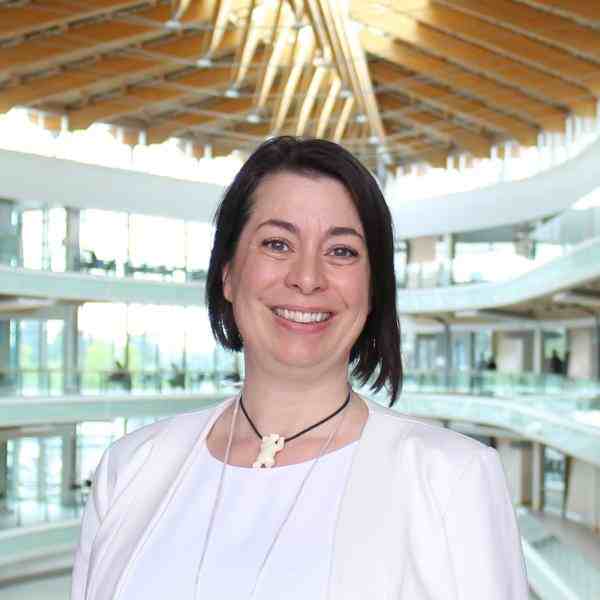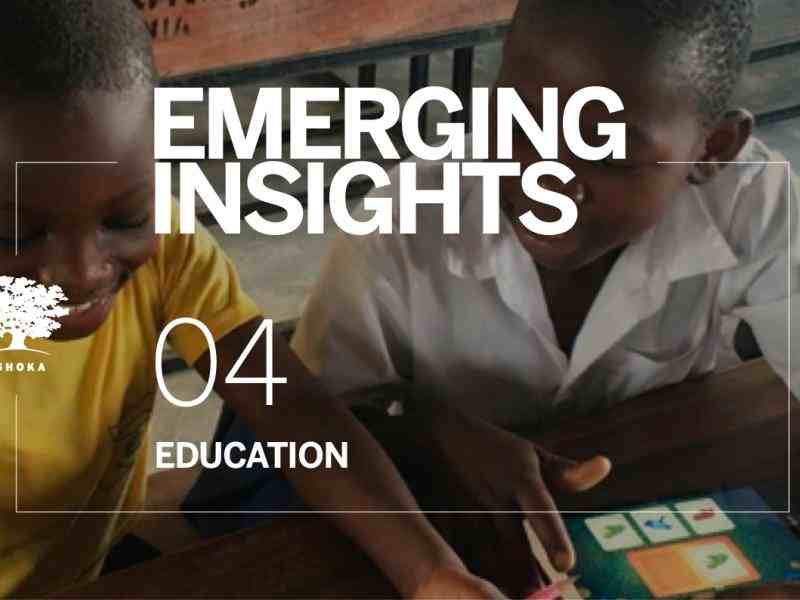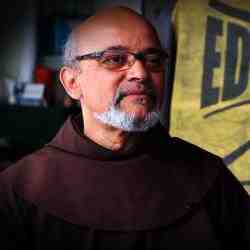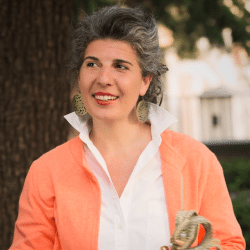Introduction
Shelly is creating a new role for Inuit youth in society by leveraging their unique abilities to bridge western and Inuit world views. In doing so, Inuit youth are empowering themselves as well as the Arctic communities of which they are a part to self-determine in a region with strong colonial legacies. They are also contributing to better quality research on the fastest changing region on Earth – the Arctic - to enhance northern resiliency and adaptation.
The New Idea
Shelly is a master organizer bringing citizenship to the strategically important Inuit youth population. She is overcoming generations of systemic discrimination by carving new pathways for Inuit youth to marry two-millennia-old Inuit traditional knowledge with western science to better understand and manage rapid environmental and social change in the North. Specifically, this work involves engaging Inuit youth to step into new societal roles as Indigenous scientists capable of managing their resources, determining their cultural futures, adapting to climate change and reconciling tensions between Northern Indigenous groups and non-Indigenous Southerners.
This ‘two-eyed seeing’ takes shape in a new ScIQ ontology (Sc: western science; IQ: Traditional Inuit Knowledge) and delivers a more robust and reliable understanding of Arctic change. Via ScIQ, Inuit youth are stepping into new ways of being as proactive leaders, problem-solvers and knowledge holders in a context where Inuit elders are the traditional knowledge keepers in community and where western scientists have commonly dismissed Indigenous knowledge systems. Not only are the youth using ScIQ to develop research questions, designs and execution – which is contrary to traditional academic community engagement processes -- they are brokering agreements to own and house the research they co-lead. This data ownership provides new informational assets and tools for empowerment for their communities. This is significant in a context where research data is almost always held outside of community and in the south of Canada to inform industry development and government policy (e.g. resource extraction, mapping, shipping corridors, environmental monitoring) and where Inuit have only been engaged by southerners for more technical capacities - i.e. as motorized sled / dog sled drivers. ScIQ is a vessel for Inuit youth to regain pride, step into power, inform policy, and gain professional skills for employment.
Shelly is a cultural architect who is using research as an entry point to reshape Southern perceptions of Arctic Inuit excellence and youth potential. She is fearlessly organizing people and institutions to recognize the unique gift of Inuit youth to bridge two divided worlds - Indigenous Northerners and non-Indigenous populations in the Canadian South. As such, Inuit youth, a demographic with the lowest levels of formal education and employment opportunities in the country, are at the forefront of a new knowledge economy where value, resource, information and authority flows are reconfigured for Northern resiliency. The impact of this social innovation and its principles extend beyond Inuit communities and is actively being adapted by other Indigenous communities as a means for self-determination.
The Problem
In 2019, the Arctic is known as one of the fastest-changing regions on Earth – both environmentally and culturally due to climate change and the legacy of colonization. Anthropologists know that culture reflects the environment; as the environment changes, so too does culture. The changing climate and changing culture threaten both the Inuit way of life and the sophisticated system of knowledge called Inuit Qaujimajatuqangit or “IQ”. IQ reflects Inuit knowledge of the land, water and animals while providing guidance through societal norms and values. In the face of climate change, Inuit fear that their IQ, developed over millennia, will no longer safeguard their ability to ensure survival and social harmony.
In addition to this rapid change, the legacy of colonization in Canada has significantly shaped Northern communities and traditional ways of life. For instance, Canada’s Residential School System strategically separated Aboriginal children from their families, in order to minimize and weaken family ties and cultural linkages, and to indoctrinate children into a new culture of the legally dominant Euro-Christian Canadian society. The schools predominantly expanded after the 1950s in the North, affecting successive generations of children from the same communities and families for almost five decades. Children were abused, physically, psychologically and sexually, and they died in the schools in numbers that would not have been tolerated in any other school system in the country. Since Aboriginal people make up a large proportion of the population in the northern territories of Canada, the intergenerational impact of the schools has been felt intensely through the region, resulting in a number of social challenges. For example, in 2019, the four Inuit regions in Canada have rates of suicide that range from 5 to 25 times the rate of suicide for Canada as a whole.
For youth in the North, the challenges are particularly notable. Demographically, youth under the age of 30 comprise 60% of the population in Nunavut Territory, representing the largest and fastest growing population of youth in Canada. These youth statistically have the lowest levels of education and the fewest opportunities for employment, and they are faced with constant food insecurity and overcrowded housing. Only 35% of Inuit have earned a high school diploma versus the national average of 86%. In 2015, the Inuit people in Inuit Nunangat (Inuit territory across the Arctic) aged 15 years and over earned an annual median income of $23,485 compared with $92,011 for non-Indigenous people in this region. This represents an income gap of almost $70,000. Furthermore, youth in this region are deprecated by being told that they have “a foot in two worlds” (i.e. Western and Inuit), implying that they are less-than-authentic members of Indigenous society. Typically, there have been no roles for these youth at the community level that celebrate the strengths and advantages of two ways of knowing, or for meaningful opportunities to use this knowing for tangible benefits in their communities.
In terms of systems of knowledge generation, colonial legacies continue to influence the way in which research is conducted in the North of Canada. This includes agendas that are driven by southern priorities and data that is owned and managed by southern, non-Indigenous settler populations. Inuit identity, language, and ways of knowing and doing have been systematically removed from this knowledge generation, impacting power and socio-economic and spiritual wellbeing. As such, Inuit populations most affected by a changing Arctic have perhaps the least amount of agency to contribute to research questions and data collection to inform decision-making in their own backyards. For example, Environment and Climate Change Canada website states “Environment Canada’s policies, regulations, programs and services are based on the best available scientific evidence” but typically this science is created outside of – and devoid of consultation with -- Indigenous populations. These populations have the most robust experience with the Arctic lands; 65,000 Inuit in Canada live in 51 communities on 35% of Canada’s landmass and 50% of its coastline. Federal departments such as the aforementioned do not provide clear pathways for Indigenous involvement in creating the very science that will be used to determine policy in the North—even in this era of Reconciliation.
Altogether, the changing climate and way of life, history of colonization, high poverty rates and lack of recognition of the value of youth compound two core issues: (1) a growing disadvantage and powerlessness of Inuit youth and other young Northern Indigenous populations, and (2) the unreliable science and knowledge-generation to support adaptation in the North.
The Strategy
Heavily influenced by the traditional values of the Inuit community in which she lives, Shelly learned that, traditionally, camps were comprised of people who all contributed according to their skills and abilities. Shelly’s community decided that the best role for her was to support youth to connect with the rest of world and to use her formal education and skills to do so. Shelly was also encouraged to speak up on behalf of the community as Inuit are traditionally cautioned to be non-confrontational for the sake of social harmony. The community encouraged her to use her unique positioning as an ally, and non-Inuk community member, to stand up in more public ways to hold resource development and government actors accountable.
As such, in 2013, Shelly decided to tackle the large gap in Arctic science, where decision-makers and Indigenous peoples were largely disconnected. She started by contacting the Arctic College to apply to teach their course in Environmental Technology. When she started, she was told that she would be lucky to have two graduates from the program. Instead she had fourteen. Her success started with sharing a simple notion that Indigenous Northerners are the original Arctic scientists. This was “off the curriculum” which was developed to teach Inuk youth how to be assistants to researchers, such as boat drivers or sample collectors. Shelly believed that centering the program to cultivate and promote Arctic excellence and leadership removed the mental barrier of believing that science is something that is done outside of the Arctic by someone else. In doing so, she saw youth gain new ownership over knowledge generation as they understood that observation, monitoring and testing are the roots of both science and traditional Northern Indigenous knowledge systems.
Following the Arctic College experience, Shelly gathered the youth she taught to co-create a new program – outside of the College -- called Ikaarvik (“bridge” in Inuktitut). They developed a vision of how to support youth to shift the entire research process in the Arctic that orients it from the North to the South (not the South to the North) for more relevant science and youth empowerment. Ikaarvik values starting with investing time in creating relationships with the community as well as building trust. From there, the communities were invited to select the youth for the program, generally aged 18-30. Shelly argues that this age group is special in that they are often young parents, active hunters and eager to find ways to strengthen their language and culture while gaining transferable skills for employment.
Once selected, Ikaarvik youth start by identifying the strengths of local knowledge (in the first cases, Inuit knowledge) and the strength of scientifically-derived knowledge. From there, they explore how the two can work better together to address issues of local relevance to communities. The youth explore the concept of ScIQ as a new template for creating better science and for informing decision-making in the North. This step is critical to ensure that the youth are aware of how research can be used as a tool for Indigenous self-determination and policy development.
Over the course of a five-day workshop facilitated by Ikaarvik and its Youth Mentors, youth identify issues that their communities face that might be addressed by following the principles of ScIQ: they present their findings to their broader community (Elders, Hamlets, Hunters, etc.) and generate a consensus about research priorities for their community. They follow Inuit governance models (e.g. Aajiiqatisiimiq: decision-making through discussion and consensus). Once research priorities have been established, Ikaarvik links the community with Southern researchers who have the ability and interest to work with the community to address their local priorities. Researchers spend a week with the youth before they even start the research. Ikaarvik Youth advise researchers to help them refine their questions, methodology and terminology. Ikaarvik Youth also help to identify participants and to build trusting relationships and ownership over the research. In return, the researchers train youth on techniques to assist with the research such as conducting interviews, mapping exercises, taking notes and asking probing questions. From the outset, Ikaarvik youth negotiate to keep the data in their communities as new assets. Researchers sign Indigenous Knowledge consent forms that clarify where data and results will be housed and stored for archives. The exchange includes guidance on how the research might be leveraged for policy change or other community needs. The new knowledge contributes to better problem-solving in domains ranging from resource development, to re-routing shipping corridors, to ice monitoring for tracking changing ice conditions for hunting and harvesting.
Since ScIQ is considered to be an evolution in collecting better information on Northern conditions – it becomes a « pull innovation » that academic and governmental systems seek out. As such, it is completely shifting traditional knowledge hierarchies and the systems that hold them in place. For example, between 2015 and 2019, Inuit Youth – a demographic with some of the lowest levels of formal education in the country – have run annual workshops for Master’s and PhD students at ArcticNet’s annual science conference in Ottawa. As of 2019, the Inuit Youth have trained over 750 Masters’s- and PhD-level students (early-career researchers) on community-engaged research, how to meaningfully engage Indigenous peoples and how to utilize Indigenous knowledge. These youths are building legitimacy for « two-eyed seeing », where Indigenous knowledge systems have a place in the academy and government agencies. For example, SmartICE – a southern run Arctic sea ice monitoring company – now employs Ikaarvik youth to achieve better science. It recently won the Canadian Governor General’s Innovation Award for their work to generate more relevant data in the North.
Ikaarvik youth are also getting involved at the international level to work with the Arctic Council’s Protection of the Marine Environment as well as with the International Institute for Sustainable Development’s Circumpolar Youth Leadership program. This has resulted in further opportunities for Ikaarvik youth to link Indigenous research to policy development. In 2019, one Ikaavik youth participant was brought to a UN convention in Bonn, Germany to speak on behalf of all Arctic Indigenous peoples. Government researchers actively seek advice on how to develop their projects and engage with communities. In the words of the federal agency Polar Knowledge Canada staff, “the Federal Government is spending millions to figure out how to integrate traditional knowledge and science. Government talks about it but doesn’t know how to do it. Ikaarvik is coming up with solutions and actually doing the work.” Thanks to Shelly’s vision, new norms are being set in funding proposals that ask how a researcher will engage with communities and how results will be shared back. The National Inuit Organization ITK (Inuit Tapariit Kanatami) reached out to Ikaarvik to consider adding ScIQ to their National Inuit Strategy on Research. As well, the Social Sciences and Humanities Research Council of Canada asked Ikaarvik to contribute to a position paper to inform the process of granting and funding research projects in the North to ensure that Indigenous communities and community-driven research is able to access funding without having to work through government or academic partners. Ikaarvik is successfully moving towards influencing all levels of knowledge generation in Canada's Arctic.
As of 2019, Ikaarvik has worked deeply with over 65 youth in 5 communities of 31 (16%) Northern communities in the Inuit homeland. While it appears to be a relatively small number of youth engaged, it is clear that the leverage effect is tipping knowledge hierarchies and knowledge-generation practices amongst researchers, government scientists, and businesses in the North. In early 2019, Ikaarvik youth were invited to adapt the model to Kluane and Champagne-Aishihik First Nation communities in the Yukon Territory, which engaged another 15 youth (totaling 80 youth) in employable skills creation, new wages funded by hundreds of thousands of research dollars redirected to Aboriginal youth, and a sense of cultural empowerment and control. This program addresses mental health challenges connected to colonization by fostering a new sense of pride, celebration of Indigenous culture and opportunities for new pathways forward. Ikaarvik has also created an unprecedented opportunity for young Inuit women to drive community research in a context where older men have been the voice for environmental issues. Elders report often being moved to tears when they hear the Ikaarvik Youth’s research presentations because they haven’t seen the younger generation keeping Indigenous knowledge alive or haven’t seen it applied in such an innovative way.
To support the spread to new communities, Shelly is developing a North-to-North mentorship program guided by Indigenous Knowledge and values and run by Inuit and First Nations community members. There are eight Ikaarvik graduates who serve as mentors for this program and five Community Coordinators for their busiest communities to ensure that they are properly supported. Ikaarvik youth researchers are also moving on to continue their education through Arctic College and Carleton University, and are being actively recruited by the Nunavut Impact Review Board, Polar Knowledge Canada, and various University and Government research programs.
As of 2019, Ikaarvik’s activities have been financed by the Arctic Inspiration Prize, Polar Knowledge Canada, SSHRC (Social Sciences and Humanities Research Council), NSERC (Natural Sciences and Engineering Research Council), Royal Bank of Canada Future Launch, Health Canada Climate Change Adaptation Funding, Gordon Foundation, and Ocean Wise. Once projects are established between communities, funding for the youth comes from the university or agency involved.
Shelly’s long-term goal is to make herself obsolete. Her vision is that Ikaarvik will be completely run by Inuit and First Nations youth who are actively reconciling Canada’s Indigenous and non-Indigenous communities while owning new, more relevant information to guide resiliency in the North.
The Person
Growing up in the Canadian Arctic, Shelly was the only “white” kid in her class. She had no concept that she was different from her friends – she even thought she was Inuk. This changed when she noticed two things: first, many of her friends didn’t seem to have families, and second, her friends were taken to other classrooms to learn how to sew and make tools while she received more schooling in reading, writing and math. When Shelly got older and moved with her family to Southern Canada, she realized that she had been the only non-Indigenous child in a Residential School. This realization sparked Shelly’s motivation to move back to the Arctic to work alongside Indigenous Northerners to correct the imbalance in power from which she profited as a child.
Since moving back to the Arctic, Shelly learned how to make a life as a researcher, wife and mother alongside the strong community of Inuit who patiently guided her. Her most transformative experience was one of deep grief and healing when she lost her twins during pre-term labor. The Inuit way of sharing the burden of grief through the darkest days of her life propelled her to understand the strength of Inuit knowledge and values from a purely intellectual understanding to a more holistic experience. Furthermore, the community decided that in order for Shelly to heal, it was critical for her to adopt a baby in need from the community “to fill the hole in her heart”. Shelly did so, and in 2019 she is the mother of a 5-year-old Inuk girl who has both an Inuit family and a Qallunaat (non-Inuit) family.

 Tile image
Tile image


